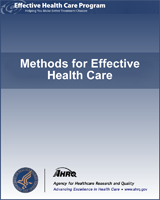NCBI Bookshelf. A service of the National Library of Medicine, National Institutes of Health.
Gliklich RE, Leavy MB, Li F. Standardized Library of Asthma Outcome Measures [Internet]. Rockville (MD): Agency for Healthcare Research and Quality (US); 2019 Apr.
For each measure, the accompanying workbook (Appendix B) contains the narrative definition and recommended reporting period (timeframe), the initial population for measurement (e.g., all asthma patients, all asthma patients ages 12 and older), the outcome focused population (patients who experienced the outcome of interest), and the data criteria and value sets.
Electronic Health Record (EHR) data often will not contain all the requisite components of an outcome definition that would allow for the computational confirmation of that outcome. The approach used for this project is to gather the clinician’s assertion of an outcome condition and as much supporting evidence as possible, so that even where the expression logic cannot computationally confirm an outcome, some structured evidence might still be available.
Relationships between events raise a challenge because relationships are often not directly asserted in an EHR. Thus, where possible, relationships have been inferred based on time stamps and intervals. Where this is not possible (e.g., cause of death), the logic requires an asserted relationship.
For each outcome, the following have been defined:
- An object representing the outcome condition itself: In many cases, the only structured data will be an assertion of an outcome, with all the supporting evidence being present in the narrative.
- Fast Healthcare Interoperability Resources (FHIR) for evidence for the outcome: These include labs, diagnostic imaging, etc.
- FHIR for additional relevant events: These might include procedures, encounters, etc.
- Temporal aspects for all events: These allow for inferred relationships.
- Approach to Representing an Outcome Definition - Standardized Library of Asthma ...Approach to Representing an Outcome Definition - Standardized Library of Asthma Outcome Measures
Your browsing activity is empty.
Activity recording is turned off.
See more...
